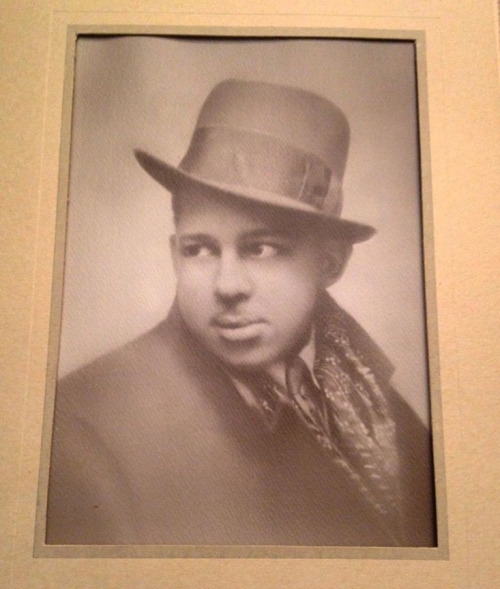
A young man, a snappy hat and a suave glance just past the camera — this is the treasured family photo of Alfred Paul Trescott in his 20s, a “cool cat” in the Harlem Renaissance.
It’s the photo Deirdre Darden unearthed at her family’s house last year and submitted to “Historically Black,” The Washington Post Tumblr project. Her mother, former Washington Post reporter Jacqueline Trescott, had preserved the photo in its studio frame, a relic from her father’s youth in Harlem. He’d had his photo taken at the legendary James Van Der Zee studio — a New York photo studio snapping street life, urban scenes and black glamour.
“I just see this sort of, like, funny, probably, like, really smart, kind of sly guy,” Deirdre says. “That’s fashionable. … Yeah, just like a cool cat.”
According to historian John Wright, Van Der Zee’s studio spread a new image of a sophisticated, cosmopolitan Harlem and the black people living in it — an image that stood in stark contrast to many of the racist caricatures popular at the turn of the century.
“The emergence of photography and of black community-based photographers taking images that served this reconstruction of the image of a new Negro is all of a piece,” he said.
When Van Der Zee and his first wife, Gaynella, opened the original studio on 135th Street, the photographer became famous for his “tableau-style” portraits. He would create elaborate sets and design backgrounds to layer different images, styling a rich, painter-esque piece. In one of his most famous works, a newlywed couple poses before a fireplace — in the foreground, Van Der Zee superimposed a faint image of a newborn baby. He called it “Future Expectations” — and his subjects loved it.
According to some historians, Van Der Zee would keep a wardrobe of suits and dresses in his studio for subjects to use when they couldn’t afford new clothes for their already expensive portraits.
But Donna Van Der Zee, the photographer’s third wife, remembers it differently.
“Remember, it was not expensive to have a photograph taken,” she said. “You had to look your best. Not only that. They may have borrowed a suit or a jacket or a dress or a hat from a relative.”
In addition to creating tableau-style backgrounds and collaged images, Van Der Zee would also add some light retouching to his subjects.
“If it wasn’t beautiful, I took out the un-beautifulness … put them in the position that they look beautiful, took out the defects,” he told a TV interviewer. “They all look beautiful to me.”
Throughout his 40 years working in Harlem, Van Der Zee saw his business flourish and his influence grow. He opened multiple studios in the neighborhood and courted celebrity clients, such as Bill Cosby and Muhammad Ali. But today, his vast archive of images depicting ordinary Harlem residents — such as Darden’s grandfather Alfred — is honored by historians and displayed in museums around the world.
“He used to talk quite a bit about how his subjects [of the time] didn’t realize just how beautiful they were,” Wright said.